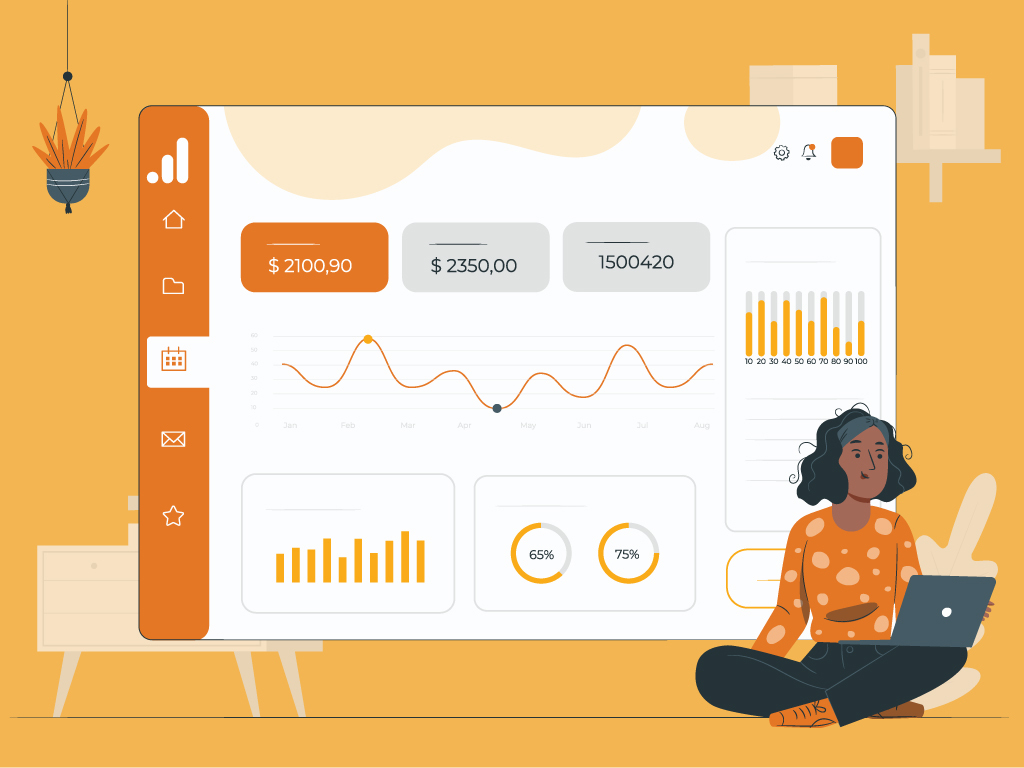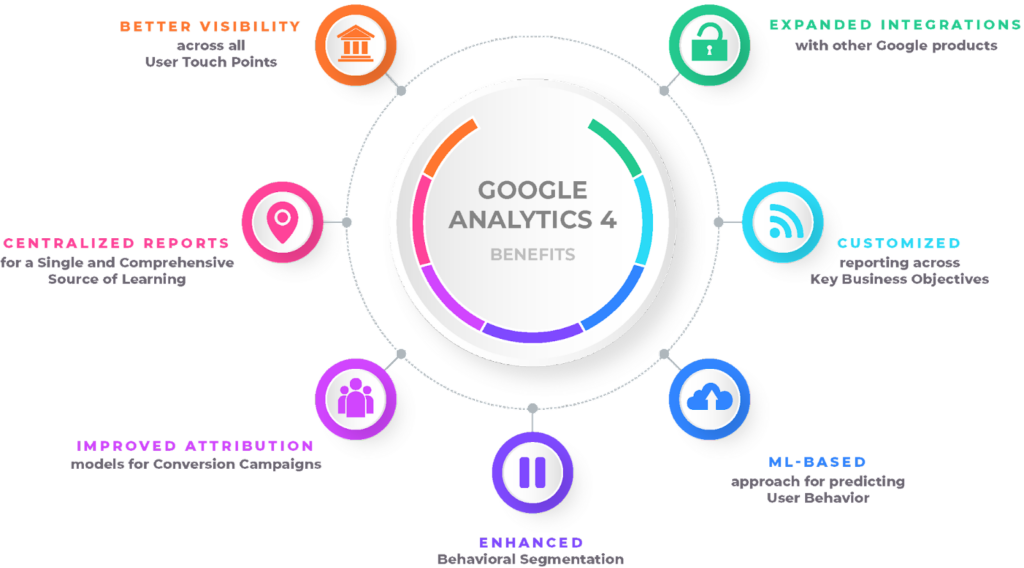Comprehending What is a "Dimension" in Google Analytics: A Comprehensive Overview
Comprehending What is a "Dimension" in Google Analytics: A Comprehensive Overview
Blog Article
Optimize Your Marketing Approach With Advanced Google Analytics Dimensions Techniques
In today's competitive digital landscape, taking advantage of the power of innovative Google Analytics dimensions techniques is critical for services looking to improve their advertising and marketing strategies. Keep tuned to uncover exactly how these techniques can change your marketing technique and drive concrete results in an ever-evolving electronic ecological community.
Understanding Customer Actions Insights
Recognizing Customer Behavior Insights is a crucial element of any type of marketing strategy. By utilizing devices like Google Analytics, organizations can obtain beneficial insights right into how customers interact with their web site. These insights can assist marketing experts make data-driven decisions to optimize their campaigns and improve the customer experience.
Analyzing user habits can reveal essential metrics such as bounce rate, session period, and pages per session. Bounce price, for instance, suggests the percentage of site visitors that leave a site after checking out just one web page (what is a “dimension” in google analytics?). Recognizing this metric can assist marketers determine potential problems with landing pages or web content that may be driving visitors away
Furthermore, tracking user habits can additionally give understandings right into the efficiency of advertising and marketing campaigns. By keeping track of metrics such as conversion prices and goal conclusions, companies can analyze the effect of their advertising and marketing efforts and make changes as required.
Tracking Conversion Courses
Evaluating conversion paths is a basic element of a comprehensive marketing technique. By tracking the series of communications users have with your web site before completing a desired objective, you can obtain valuable insights into the efficiency of your advertising efforts. Google Analytics gives necessary tools to keep track of conversion courses, allowing you to understand which touchpoints and networks add most to conversions.
Through conversion path monitoring, you can determine the most usual paths users take in the past transforming, aiding you maximize these pathways for much better results. By evaluating the various steps customers take, you can identify prospective traffic jams or locations for improvement in your advertising funnel.
In addition, tracking conversion paths enables you to associate conversions accurately to specific advertising channels, projects, or material (what is a “dimension” in google analytics?). This information is essential for alloting resources properly and optimizing the ROI of your advertising and marketing campaigns
Making Use Of Custom-made Dimensions Properly
When intending to boost the depth of understandings acquired from Google Analytics, companies can utilize the power of customized dimensions effectively. Custom measurements enable organizations to collect and assess data details to their one-of-a-kind demands and objectives. By specifying custom measurements, organizations can track and measure information that is not recorded by default in Google Analytics, such as customer qualities, interactions, or product details.
To use custom-made measurements properly, services should initially recognize the key metrics and dimensions that align with their advertising and marketing objectives. For instance, a shopping site might create customized measurements to track the dimension or color of products seen by customers. By integrating these custom measurements into their analytics monitoring, businesses can acquire a deeper understanding of user actions and preferences.
Moreover, personalized measurements can be made use of to segment data properly, supplying more targeted understandings for advertising campaigns and techniques. By combining personalized measurements with various other Google Analytics includes, services can optimize their advertising initiatives and drive better outcomes based upon a more detailed evaluation of user actions.

Advanced Division Techniques
Structure upon the structure of using customized measurements efficiently in Google Analytics, businesses can better improve their data evaluation capabilities with advanced division techniques. By segmenting data, organizations can acquire deeper insights right into the habits of details groups of clients or customers. Advanced segmentation permits the development of even more complex and certain audience groupings based on various standards such as demographics, habits, or traffic sources.
One effective segmentation method is cohort analysis, which involves organizing users based upon common qualities or habits over a specific period. This can assist organizations understand fads and patterns among various customer sectors. An additional effective method is RFM division, which classifies users based upon their recency, regularity, and financial worth of their interactions with the internet site or application.

Enhancing Acknowledgment Modeling
Enhancing Acknowledgment Modeling involves fine-tuning the method businesses connect conversions and assign credit score to various touchpoints along the customer trip. By implementing advanced acknowledgment models in Google Analytics, businesses can acquire deeper understandings into the efficiency of their advertising and marketing networks and campaigns. These designs exceed the standard last-click attribution and browse around these guys consider the effect of all touchpoints that add to a conversion.
One prominent attribution design is the Time Degeneration design, which provides much more credit history to touchpoints closer to the conversion event. This aids companies comprehend the influence of early and mid-funnel touchpoints in driving conversions. One more model is the Position-Based model, which designates credit rating based upon the setting of a touchpoint within the client trip, providing even more weight to the last and very first interactions.
Enhancing Attribution Modeling makes it possible for organizations to make even more enlightened decisions about their marketing internet spending plan appropriation and technique. By precisely associating conversions to the ideal touchpoints, services can maximize their marketing efforts for much better results and ROI.
Conclusion
To conclude, leveraging sophisticated Google Analytics dimensions methods provides companies with beneficial understandings into customer actions, conversion paths, and segmentation approaches. By utilizing custom dimensions properly and implementing sophisticated division techniques like cohort analysis and RFM division, organizations can enhance their advertising strategies for improved conversion prices and more efficient projects. Enhancing acknowledgment modeling better improves the understanding of individual interactions, eventually bring about better-informed decision-making and targeted marketing efforts.
In today's affordable electronic landscape, harnessing the power of sophisticated Google Analytics dimensions techniques is paramount for organizations looking to improve their advertising techniques.Recognizing User Habits Insights is a crucial aspect of any advertising and marketing approach. By tracking the sequence of interactions customers have with your internet site before finishing a desired goal, you can acquire valuable understandings into the performance of your marketing initiatives (what is a “dimension” in Get the facts google analytics?). By making use of custom-made dimensions successfully and implementing advanced division techniques like cohort evaluation and RFM division, companies can maximize their marketing methods for enhanced conversion prices and even more efficient projects. Enhancing attribution modeling additionally improves the understanding of individual communications, eventually leading to better-informed decision-making and targeted advertising initiatives
Report this page